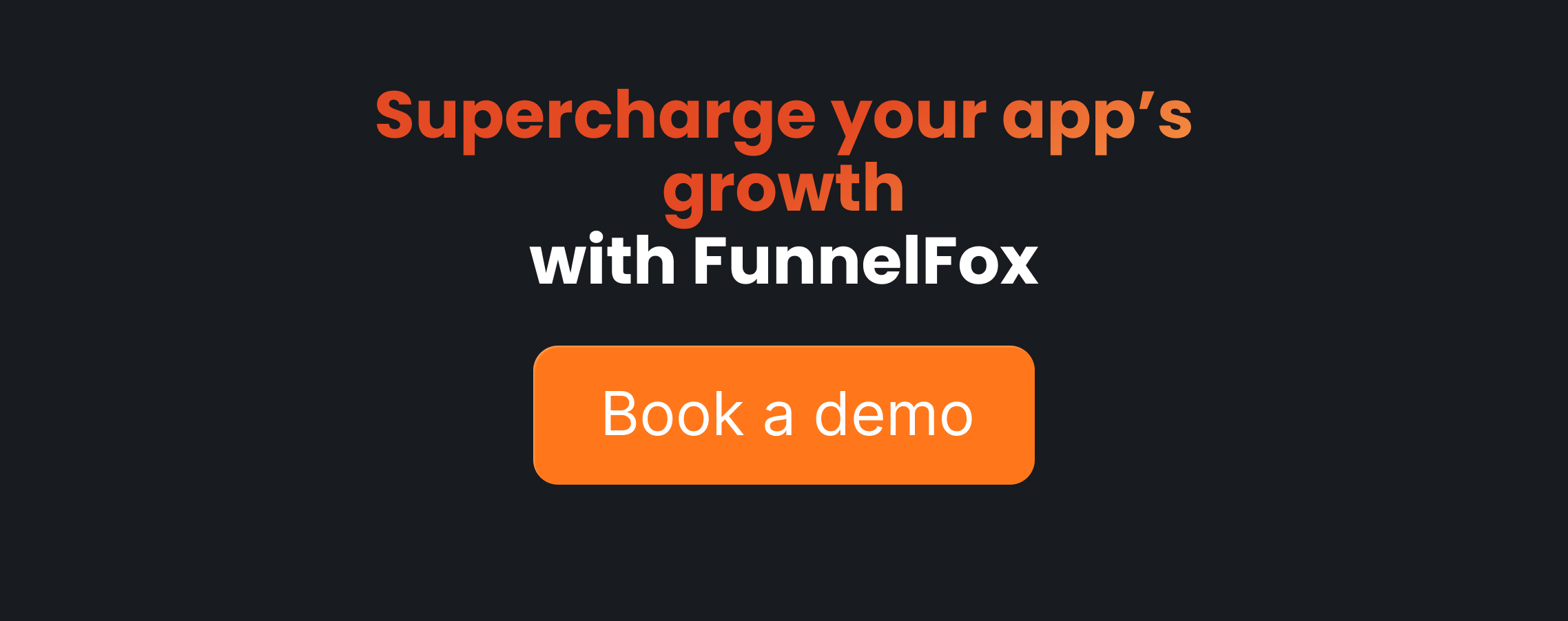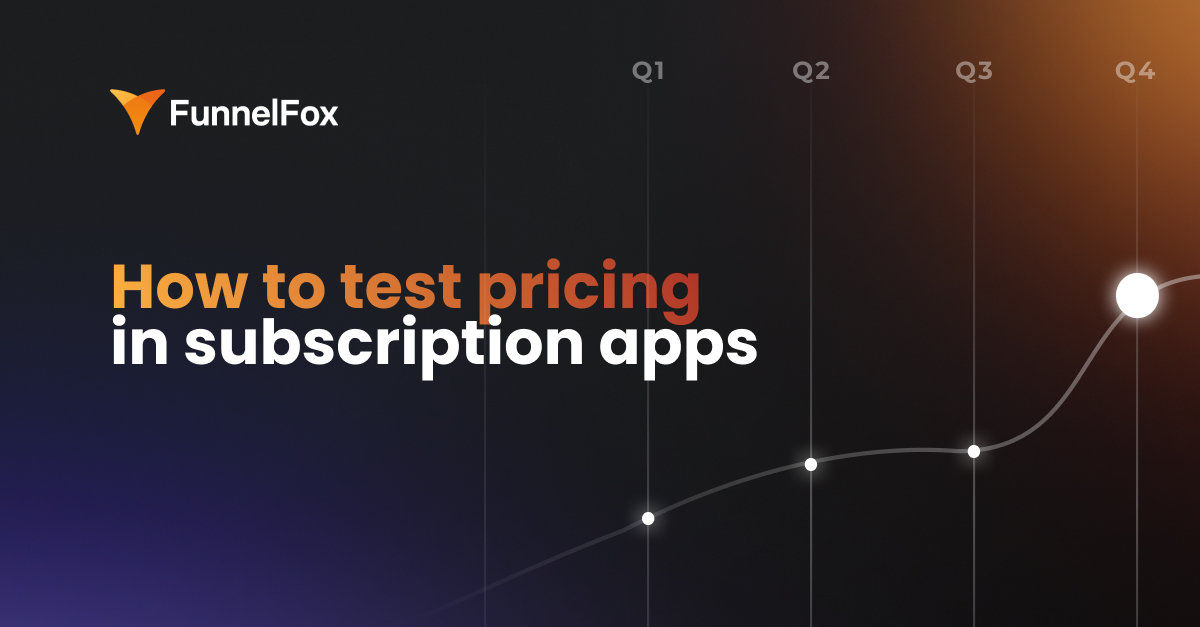Before you make your next marketing or product decision, pause and ask one simple question: how big is this opportunity?
That’s what TAM, SAM, and SOM are for:
- TAM shows you the full potential,
- SAM narrows it to what’s reachable today,
- and SOM shows what you can capture this year.
And here’s the thing: you can expand your SOM without spending a dollar more on UA, just by fixing what happens after the click: conversion, payments, retention.
This guide will walk you through how to calculate each metric, apply them to your product strategy, and turn numbers into measurable growth.
What are TAM, SAM, and SOM?
These three acronyms sound like startup jargon, but together, they answer the most important growth question: where the real money sits.
Here’s a simple breakdown:
| Stands for | What it really means | |
|---|---|---|
| TAM | Total Addressable Market | All the money you could possibly make if every potential user in the world paid you. |
| SAM | Serviceable Available Market | The portion of TAM you can realistically reach, based on your current languages, platforms, pricing, and go-to-market. |
| SOM | Serviceable Obtainable Market | Your share of SAM. What you can get right now, given your current team and budget. |
How to calculate TAM, SAM, and SOM?
Understanding the concept is one thing, but the real value comes from putting numbers to it and seeing what’s possible for your app. Let’s go step by step.
TAM: Total Addressable Market
TAM is the big “what if” number: how much revenue your product could generate in a perfect world, with zero limitations. In a nutshell, it’s meant to tell you if this market is worth entering.
There are three common ways to calculate TAM:
1. Top-down
Start with an industry report (say, the global meditation app market worth ~$6B) and narrow it to your segment (mobile subscriptions, not one-off purchases).
2. Bottom-up (the most realistic)
Start from users:
- How many people face the problem you solve?
- What percentage might pay for it?
- What’s your net ARPU after fees, taxes, and refunds?
3. Value-theory
If your app helps users save money or time, estimate the value created and how much users would pay to capture that value.
SAM: Serviceable Available Market
If TAM is your dream, SAM is your near-term future. It’s the part of the market you can serve today, defined by your live geos, supported platforms, pricing, and payment coverage.
Define your available market:
- Remove geos where you’re not live (yet).
- Exclude platforms you don’t support.
- Consider factor in payment coverage — cards only? local wallets?
- Adjust for UA pricing and compliance barriers.
The formula stays simple:
SAM = reachable users × % paying × net ARPU × 12
SAM helps you see quick wins. It tells you what’s already within reach without major effort.
SOM: Serviceable Obtainable Market
This is where things get real. SOM is the share of SAM you can realistically capture with your current setup over the coming year. Here’s the basic formula:
SOM = Installs × CR_inst→trial × CR_trial→paid × pay months × net ARPU
The exact formula depends on your funnel. If you sell subscriptions right away, without trials (like web2app flows), replace trials with checkout conversion — the logic stays the same: traffic × conversion × revenue per user.
You’ve calculated SOM — what’s next?
Сalculating SOM is just the first step. On its own, it’s a nice snapshot of your current potential — but it doesn’t tell you why it looks that way or where you can improve.
Here’s how it works: you take the same formula and plug in your real data. Then ask simple “what if” questions:
- What happens if we improve trial-start rate from 6% to 8%?
- What if subscribers stay active for 7 months instead of 6?
- What if we reduce payment failures by just 3%?
Each change moves your SOM, and that’s when the number turns from a static metric into a decision tool: you see exactly which lever gives the biggest lift, and where you’re loosing revenue: onboarding, paywall, retention, or billing.
That’s the whole point: SOM helps you find the biggest opportunities hiding inside your own funnel.
Real-world example: Meditation app math
Let’s run through a quick example to see how it looks in practice.
Imagine you’re launching a meditation app. You’ve done your research: the global meditation app market (TAM) sits around $240M/year when you factor in ~50M potential users, 5% conversion, and $8 ARPU.
Now, reality check time.
Step 1: TAM — the dream
If every potential user who wants to meditate subscribed, you’d be looking at about $240M in annual revenue.
Nice number, but it’s just the outer limit.
Step 2: SAM — your current reach
You’re launching in English, iOS-only, targeting the US, UK, Canada, and Australia — roughly 6M reachable users.
That brings your SAM down to $28.8M/year — still a meaningful opportunity, but far from the global ideal.
Step 3: SOM — your realistic share
Now let’s plug in your actual funnel:
- 100K expected installs
- 6% convert from install → paid
- Average subscription length: 6 months
- Net ARPU: $8
Your SOM = $288K/year.
So far, this is just a number. But if you break it down, you’ll see where most of the revenue slips away: too few installs turning into trials, too many trials dropping before payment, short retention, or failed payments that never recover.
Even small improvements like raising trial-to-paid conversion from 6% to 8% or extending retention by one month can shift your SOM dramatically.
That’s the real value: SOM doesn’t just show what’s possible, but also where to act next to move that number up.
How FunnelFox helps you grow SOM
If you monetize through the App Store or Google Play, you lose up to 30% of every transaction
to platform fees. Moving payments to the web lets you keep that margin — and grow your SOM without increasing traffic.
That’s where FunnelFox comes in.
It helps subscription apps build and optimize web2app funnels — from onboarding to checkout and upsells — so you can capture more revenue after the click.
FunnelFox gives you a complete no-code stack to:
- launch and test new web2app funnels fast,
- recover failed payments and reduce churn,
- and keep more of your revenue by bypassing store fees.
The fastest way to grow your SOM isn’t buying more traffic — it’s fixing what happens after the click. FunnelFox helps you do exactly that.

How to turn TAM, SAM, SOM into real product strategy
Understanding TAM, SAM, and SOM helps you make smarter calls across the entire product and growth stack. Here’s how to put it into action.
Monetization & pricing
If your SAM is small and CAC is high, you don’t have a volume problem — you have a value problem. In that case, focus on how much you earn per customer, not how many customers you add. Raise prices, push annual plans, bundle features, or add higher tiers.
If your SOM feels capped because people see the paywall and bounce, don’t rush to buy more traffic. Fix the moment of purchase.
Test layout, default plan, trial length, refund logic, copy. A stronger paywall and cleaner checkout can lift revenue faster than a new channel ever will.
GTM & user acquisition
Your TAM shows the long-term opportunity; your SAM tells you what’s reachable right now. Use that gap strategically.
Double down on regions or channels where LTV:CAC is strongest — that’s your short-term leverage.
Then expand your SAM by removing access barriers: add local payment methods (BLIK, PIX, UPI), new languages, or an Android build that opens fresh segments of your TAM.
Growth doesn’t necessarily means doing more. Sometimes, it’s about scaling what already works well and cutting what doesn’t.
Product roadmap
Your roadmap should mirror where the market opens up next. TAM tells you what’s out there, but SAM and SOM reveal which parts you can unlock fastest.
If you’ve already hit your current ceiling, expand your SAM — add a new platform, a key integration, or local payments that make you available in new regions.
If churn is the limiter, focus on retention features that extend pay months.
Ops & planning
Use SOM to plan where to focus next. If what you’re working on doesn’t move traffic, conversion, or retention — it’s not growth. Track the basics that drive revenue: conversion to paid, active months, recovered payments, NRR.
And when growth slows, look for the real reason — too little traffic, low trial starts, failed payments — and fix that first.
Before you go: Common mistakes to avoid
- Counting every smartphone owner as your target. TAM isn’t your actual audience.
- Confusing installs or traffic with real revenue.
- Forgetting about fees, taxes, refunds, or fraud — they can take a significant chunk of your revenue.
- Being overly optimistic with conversion or retention. Ground your numbers in real benchmarks.
- Expanding to new markets without local payments or compliance in place.
- Assuming channels scale linearly (they don’t). UA hits traffic ceilings, costs rise, and CPAs spike.
Wrap-up: TAM, SAM, and SOM are how you think like a grown-up product team
Real growth comes from clarity: understanding your market, your current position, and how to get there faster without wasting time or money.
TAM, SAM, and SOM give you that lens. They help you:
- Spot if a market is actually worth entering
- Focus your roadmap, GTM, and pricing around what’s realistic
- Align teams around shared growth targets
- Make smarter decisions (and avoid dumb ones)
Clarity is everything: when you know your numbers, you control your growth.
FAQ on TAM, SAM, and SOM








